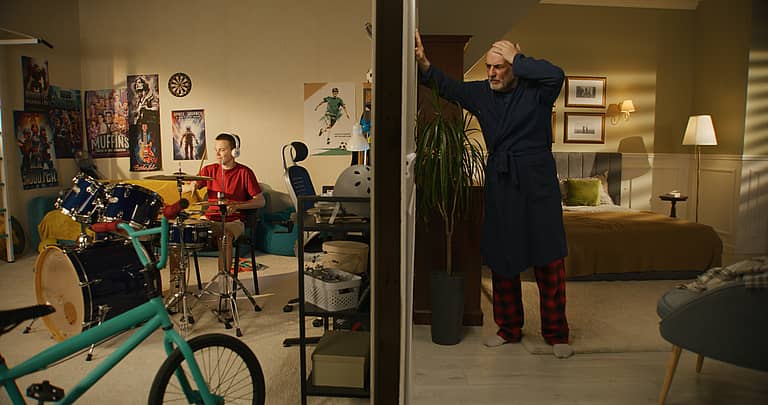The Association of the Wall and Ceiling Industry would like to remind all young executives that it has a new training program just for you.
Oh, sure, leaders can always turn to books, MBA classes, consultants and forums for guidance, and they do. But AWCI’s emerging leaders need tailored training for their work as wall and ceiling executives. Where else can they get focused training?
For more than 100 years, AWCI has been a family—tight-knit, unified and multi-generational. Individuals from one generation mentored the next, helping future leaders to polish their skills and shine. Uh, until recently, that is.
“The executive board [at AWCI] saw this hole,” says Dan Wies, president of Wies Drywall and Construction Corp. in Missouri and a member of the AWCI board of directors. “The hole is a missing group of people under age 40—those currently leading their companies or the next in line to lead their companies—and they want to gather this group and help them meet the changing needs of our industry.”
Enter AWCI’s Emerging Leaders Program. Open to all members, the program has a framework and set of initiatives curated expressly for wall and ceiling up-and-comers. Today’s young executives are already well grounded and know much about leadership. But the industry is changing rapidly, so AWCI is pushing to expand its young leaders program. This is well timed.
In this article, we’ll explore some leadership basics by presenting ideas from three of the industry’s top young minds. Each is either at the helm of their companies, or they oversee multiple major projects for their firms. They are under age 40. (Well, two shared their ages. The third was never asked.) Here’s what they had to say.
DAN WIES: THE WORLD IS COMPLICATED
Dan Wies traces his family heritage with AWCI back to the early 1970s. “I’m 37, but I feel like I’ve been in this industry forever because I’m third generation,” he says.
On LinkedIn recently, in a post about planning, Wies quoted Elon Musk: “When something is important enough, you do it even if the odds are not in your favor.” In the post, Wies said it’s possible to “build the muscle of hitting targets” to reach “what we once thought was unattainable”—i.e., all things are possible. That mindset is important to nurture because leaders face a multitude of challenges, Wies says.
What’s different about the wall and ceiling industry today?
“I feel like our world is getting more complicated; construction is getting more complicated. In the 1980s and 1990s, we didn’t have nearly as much administrative stuff and legal hurdles as we have now. In the ’80s and ’90s, we didn’t need a safety director. We didn’t necessarily have a lawyer on retainer. Our business used to be about products, about keeping up with the products and their specs.
“Today, we have a lot of innovation happening, and we have supply chain shortages. We are having to make things work, and we don’t have as many people who want to lead today.
“We never had to ask our employees about their health, and now we’re thrust into situations where a GC calls and asks me to provide vaccine records for the workers on their jobs. Can I provide that to them?
“Contracts are getting more complicated—I’m dealing with 40-, 50-, 60-page contracts. To run a company today, you have to be part attorney.”
What about technology?
“I personally love technology. I started a whole business around technology with our prefab entity, and we’re doing some cool stuff there.
“But ultimately, people can get worn out by technology. We have so many tech tools thrown at us, and nobody really knows what [technology] to standardize around.
“So it takes time to assess whether a software vendor or any technology product will work. How will it work? Where will it work? We only get a couple of ‘at bats’ to get our field to adopt these technologies. We can only adopt one or two new software programs every few years, because people get worn out. I may be comfortable with the technology, but I’m not the one who will input the information. The guys in the field run the jobs and manage the people.”
Talk about your new prefabrication operation.
“I started the company in February last year. We have FrameCAD equipment in the factory, and we’re just roll forming. We’re not doing finished exterior panels yet, but that’s on our roadmap. We haven’t completed a modular deal yet, but I’m working with clients on developing parts for various applications.
“So, we’re panelizing exterior and interior walls, roof assemblies, shelves and doing a lot of TI [tenant improvement]. We pre-assemble components, and sometimes we pre-cut the sticks they slap in place on the job.”
What’s different about leading people today?
“We don’t have as many people to lead and develop in the construction industry. We have to keep up with safety, legal issues and technology. That’s why we need a peer group—to talk about strategies and workforce development. We need one spot to go to for intensive leadership development.
“I’m part of two or three entrepreneurial groups myself. They have nothing to do with construction, such as the Arete Syndicate. Arete is Greek for excellence. We just need more tight-knit groups in construction. That’s why AWCI is curating this new program—to create good, solid leaders in the wall and ceiling industry.”
KYLE YU: USE YOUR SIXTH SENSE
Kyle Yu, project executive at California Drywall in California, oversees project managers, assistant project managers and engineers. He also runs a few jobs. Yu is in his late 30s and has been a project executive for three years and a project manager for four years prior to that.
Yu says his conditioning as a leader was largely set by how he was raised. “My family immigrated [to the United States] in the 1960s and 1970s, and they started small businesses,” Yu says. “I was raised around that culture and got to see how family and employees work together. That set the tone for my leadership traits. For a small business, employees are family—they’re so vital to the success of the business.”
How is leadership different today?
“Broadly speaking, construction has become less of a ‘You work for me’ deal, and more of a ‘This is a collaborative effort.’ We’re all trying to solve the same issues, the same goals: project completion, safety, productivity.
“Leadership in construction used to be based on mental toughness and the ability to shake off problems quickly. But today, you must use a sixth sense. You must lead not just with logic and analytics, or toughness, but with empathy. That’s a huge difference from how it used to be.”
What do you mean by empathy?
“Leading with empathy starts by seeing others work. When someone is struggling with a task, you check in with them. You offer a hand. You talk through problems and set all judgment aside. You don’t say, ‘You’re doing it wrong.’ You say, ‘This is a problem for us to solve together.’”
How do you develop this style of leadership?
“I treat people based on how I want to be treated. I try to be reasonable. I like to think that when I speak to others, and work with others, I’m working for their best interests.
“Again, it has to do with my upbringing in a small family business. But I also attended Kettering University, which has a co-op program. I worked with businesses on all organizational levels. In the automotive field, I worked on the factory line, in testing, in marketing and with group directors and VPs. The experience shaped me because I saw how getting in someone’s face—losing the human aspect of communication and being visceral by yelling and screaming at them—just puts people in fight-or-flight mode. It’s not effective. And I try to remember that.”
What leadership training are you involved in?
“Project executives [at California Drywall] meet regularly, and we talk about everything. It’s a wonderful platform because there’s no judgment. It’s just an open forum.
“We also have meetings with our foremen and general foremen. We talk about our new manufacturing capabilities to prefabricate panels and assemblies, so everybody knows the tools we have at our disposal.
“But the solutions to many problems come from the field guys—it’s in their heads. They touch problems with their hands day in and day out. So, opening up the communication with the field personnel is vital—there are no bad ideas.”
What’s the hardest part about leading?
“The hardest part is people think you have all the answers. Well, I don’t. But the great thing about Cal Drywall is our communication platforms. We have decades of experience at all levels in the organization, so when an answer isn’t in front of you, we roll our sleeves up and talk it through as a group. I try to flip the situation on its head: ‘We don’t know the answer, OK. It’s a great time to figure it out.’”
What’s your favorite part of leading?
“When I see somebody tackle a task or obtain a skill that was difficult for them. They got through to the other side, and they can look back and smile. ‘That was one heck of a time I went through. And now I see that task differently.’
“As a project executive, I’ve learned to look at things broadly and to set the next milestones for our team. While we work on those goals, we may have to do a course correction, so I’ll stick more reference points out there for us to work on—together.”
BRITTNI DALEY=GRISHAEVA: TRUST THE BASICS
Brittni Daley-Grishaeva is president and chief financial officer at Daley’s Drywall & Taping, Inc., a California-based family business founded in 1963.
Daley-Grishaeva started working at Daley’s in 2009 in accounting and administration. She graduated from the University of California at Santa Cruz in business management and economics, emphasizing accounting and legal studies.
She has served as president of the Silicon Valley chapter of the Construction Financial Management Association and the Santa Clara chapter of the National Association of Women in Construction.
Some of your colleagues feel there’s more on the shoulders of leaders today. What do you think?
“There’s more on my shoulders, but the tried-and-true basic principles still apply. I think we can outsmart ourselves by trying to get more cutting-edge. Sometimes just the basic leadership principles are the most helpful.
“People have been in our industry for many years. They can mentor younger people, and the methods they learned 30 years ago, 40 years ago, mostly still apply—with the caveat that technology and the pandemic have definitely made things different.”
How is the business of construction changing?
“The biggest thing we’re all dealing with right now is deciding to allow employees to work from home—trying to keep a balance between keeping everyone safe and productive. That question has come up before, but the pandemic has thrown us into it much faster than we were expecting.”
People can be choosy about their jobs right now.
“Yes, absolutely. Employees will switch jobs more than they have in prior years, and they generally don’t plan to stick with the same company for the entirety of their careers as they used to do.
“Luckily, we had a flexible work-from-home environment before the pandemic, so we’ve been able to pick up employees looking for that.
“As we’ve grown, we’ve really strategized and tried to maintain the family feel of our company. It’s been a goal up in the front of our minds that we’ve tried to maintain. We’re a good fit for employees looking for that. I think a lot are looking for that type of company culture.”
Where do you personally turn for leadership development?
“We have lots of programs and consultants at Daley’s. And AWCI is a huge resource for us. I was just looking at the [AWCI] convention program, and I’m excited about it. They have a lot of activities planned for emerging leaders. AWCI has really developed that program in the last year.
“We also use FMI’s leadership training. We do something called Catalytic Coaching, which is about goal setting to develop employees. And we work with a lot of leaders in forum groups. Three of us are in AWCI forum groups, but we have other forums. I’m in a Renaissance Executive forum. I’m also involved with CFMA, the Construction Financial Management Association, and NAWIC, the National Association of Women in Construction. Our local group here is WACA, the Wall And Ceiling Alliance.”
Have you committed to participating in AWCI’s Emerging Leaders Program?
“Yes. I was on the original committee, called the Industry Forward Committee. It was a good name, but Emerging Leaders made more sense. We have the same initiatives to reach all emerging leaders out there with support and education.
“The biggest value to me is the networking, the long-term relationships and the educational seminars, and I’ll also throw in the fun. We have some fun events planned.”
How are these programs changing you as a leader?
“That’s a really good question. I think it’s about practicing the skill sets you learn. Over time, you get better with listening, with delegation, with how to motivate and inspire employees.
“There’s not a whole lot I’m doing different right now, but I’m trying to do it a level up. I’m trying to learn tricks and tips from other leaders—not shortcuts but getting better at proven methods. I go to other leaders and say, ‘What works for you?’ Then, I make slight tweaks that make a big impact for me. It’s like the analogy of a ship. You change course by a few degrees, and you end up on a different continent.”
Mark L. Johnson writes regularly about the wall and ceiling industry. You can reach him at linkedin.com/in/markjohnsoncommunications.





